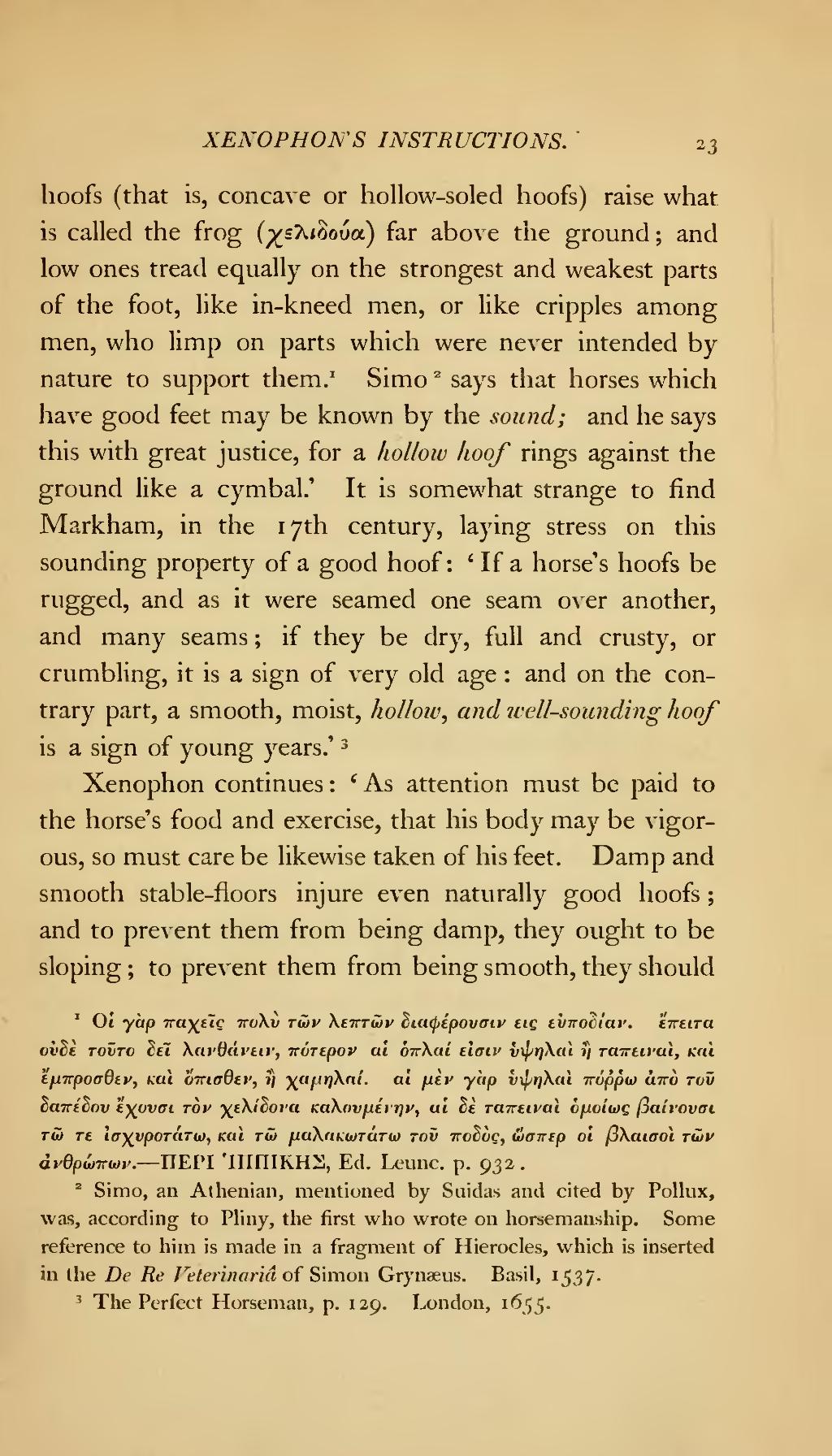hoofs (that is, concave or hollow-soled hoofs) raise what is called the frog (χελιδούα) far above the ground; and low ones tread equally on the strongest and weakest parts of the foot, like in-kneed men, or like cripples among men, who limp on parts which were never intended by nature to support them.[1] Simo[2] says that horses which have good feet may be known by the sound; and he says this with great justice, for a hollow hoof rings against the ground like a cymbal.’ It is somewhat strange to find Markham, in the 17th century, laying stress on this sounding property of a good hoof: ‘If a horse's hoofs be rugged, and as it were seamed one seam over another, and many seams; if they be dry, full and crusty, or crumbling, it is a sign of very old age: and on the contrary part, a smooth, moist, hollow, and well-sounding hoof is a sign of young years.’[3]
Xenophon continues: ‘As attention must be paid to the horse's food and exercise, that his body may be vigorous, so must care be likewise taken of his feet. Damp and smooth stable-floors injure even naturally good hoofs; and to prevent them from being damp, they ought to be sloping; to prevent them from being smooth, they should
- ↑ Οι γαρ παχεις πολν των λεπτων διαφέρουσιν εις ενποδίαν. επειτα ονδε τούτο δει λανθάνειν, πότερον αι οπλαί εισιν νφηΧαι Γ/ ταπεινοί, και έμπροσθεν, και όπισθεν, Γ/ χαμηΧαΙ. α! μεν γαρ υψηΧαϊ πόρρω από του ΙαπεΖον εχονσι τον χεΧίΙονα καΧουμενην, αι δε ταπιιναί ομοίως βαίνουσι τύ τε ισχνροτάτω, και τω μαΧακωτάτω του ποίος, ωσπερ οι βΧαισοι των ανθρώπων.—ΠΕΡΙ ΙΠΠΙΚΗΣ, Ed. Leunc. p. 932 .
- ↑ Simo, an Athenian, mentioned by Suidas and cited by Pollux, was, according to Pliny, the first who wrote on horsemanship. Some reference to him is made in a fragment of Hierocles, which is inserted in the De Re Veterinariâ of Simon Grynaeus. Basil, 1537.
- ↑ The Perfect Horseman, p. 129. London, 1655.

